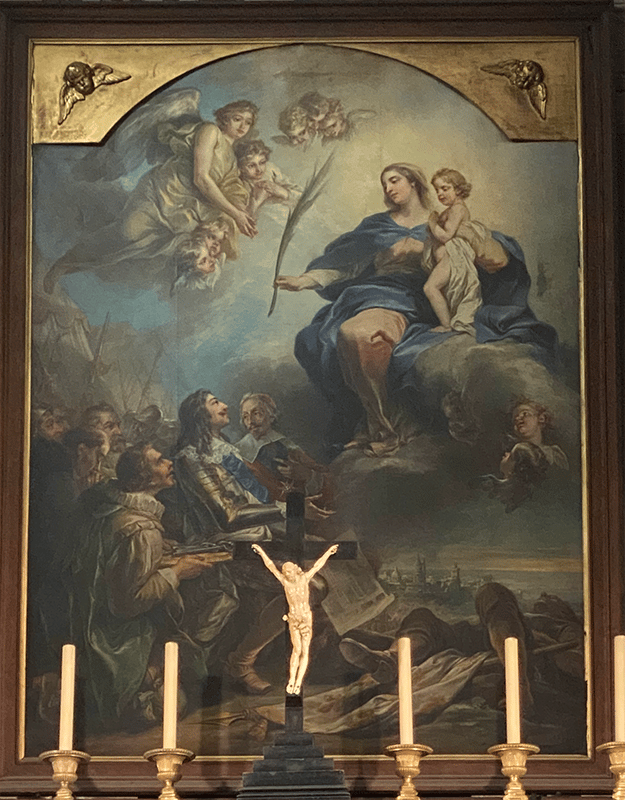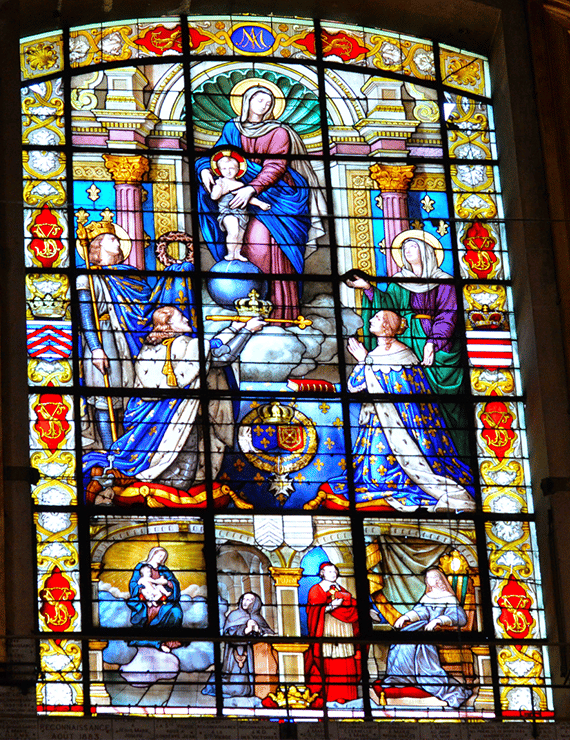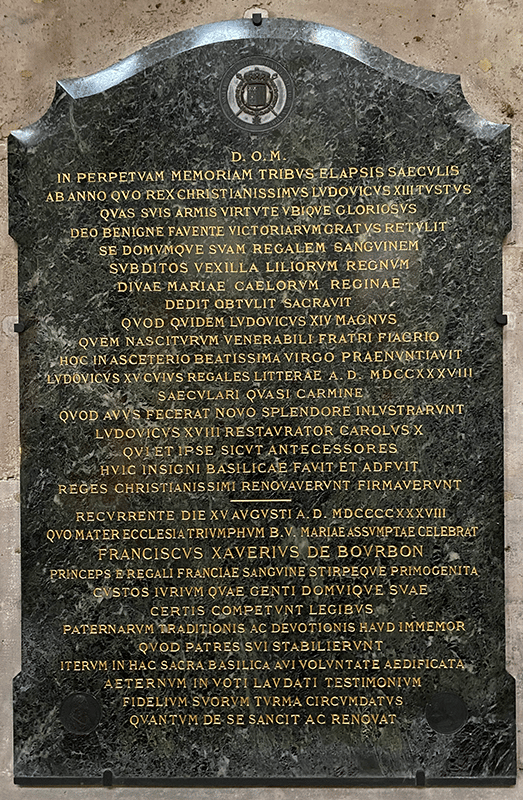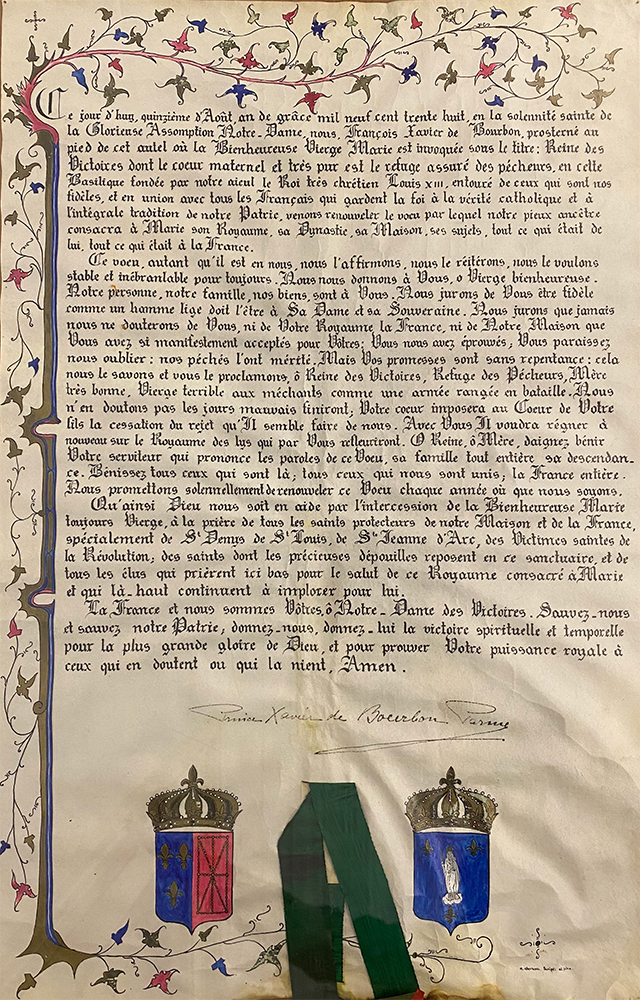A Marian Miracle
AT THE ORIGIN OF OUR LADY OF VICTORIES
The church of Our Lady of Victories, which was not yet a basilica, holds a place of first order in the history of the famous Vow of Louis XIII.
« Louis, by the Grace of God King of France and Navarre, we consecrate to the Blessed Virgin Mary especially our person, our State, our crown and our subjects »

The Vow of Louis XIII is none other than the consecration of France to the Blessed Virgin.
The story of Our Lady of Victories begins during the famous siege of La Rochelle (1627-1628). Louis XIII, who had a deep Marian devotion, made a vow: if he won this battle, he would build a church in honor of the Virgin Mary under the name of « Our Lady of Victories ».
The King of France had long wished to place his kingdom under the protection of the Virgin Mary. In 1628, when the religious of the Augustinian Order asked him to be the founder of their new chapel in the heart of Paris, Our Lady of Victories, Louis XIII immediately accepted. This was the beginning of the Vow of Louis XIII, which would take place ten years later.
In 1635, France was at war with the Spaniards. Louis XIII, on the advice of Cardinal Richelieu, thought of making a vow to the Virgin Mary to draw a blessing from Heaven on his armies. A letter from the cardinal to the king in April 1636 clearly alludes to this.
In June 1636, the king was determined to make this vow. A silver lamp was lit continuously in Notre-Dame de Paris in front of the altar of the Chapel of the Virgin. On what exact date did the king take his vow? We do not know.
On August 15, 1636, the city of Corbie in Picardy was invaded by the Spaniards. The situation was critical, but on November 17, the king of France was victorious. He went to Notre-Dame de Paris to give thanks for the success of his undertakings.
It is during the year 1637 that the Vow to the Virgin Mary is written, partly by the cardinal of Richelieu.
It is at the end of this year 1637 that the events accelerate.
On November 3, Brother Fiacre, a discharged Augustinian at Our Lady of Victories, had a vision of the Virgin Mary. The stained glass window above the chapel of Saint Augustine alludes to this. The Virgin Mary announces the upcoming birth of an heir to the throne of France.
Louis Dieudonné (« Given by God »), the future Louis XIV, was born on February 5, 1638. On February 10, an ordinance was issued to consecrate France to the Virgin Mary:
« Declaration of the King, by which His Majesty declares that he has taken the most Holy and glorious Virgin as special protector of his Kingdom.
Louis, by the Grace of God King of France and Navarre, we particularly consecrate to her our person, our State, our crown and our subjects… »
Churches that are not dedicated to the Blessed Virgin are ordered to dedicate the main chapel to her and to erect an altar with a suitable ornament.
The people are exhorted to have a particular devotion to the Virgin Mary and to implore her protection every August 15th.
The consecration was pronounced by King Louis XIII in the chapel of the Minimes of Abbeville where he was held with his armies.
That same year, Louis XIII gave Our Lady of Victories church its own coat of arms, giving it his crown and the lilies of France.

Stained glass window by Claudius Lavergne representing Louis XIII consecrating France to Mary. This work is located above the Saint-Augustin chapel, opposite the statue of Our Lady of Victories.
On August 15, 1638, King Louis XV will renew the Vow of his ancestor.
300 years later, Pope Pius XI granted France a plenary indulgence in the form of a jubilee from August 15th 1937 to August 15th 1938.
On this occasion, Prince Xavier of Bourbon-Parme, descendant of Louis XIII, solemnly deposited a text in the basilica, at the foot of the altar of the Blessed Virgin. This text is addressed particularly to Our Lady of Victories. A commemorative plaque, written in Latin, installed on a pillar at the entrance of the basilica refers to this event.





